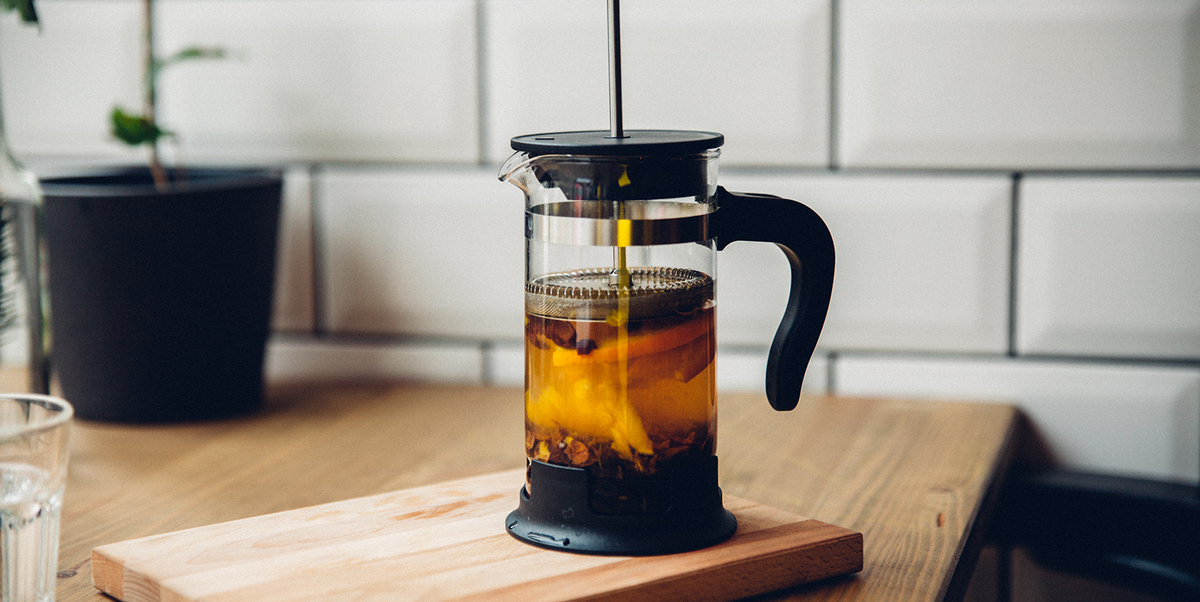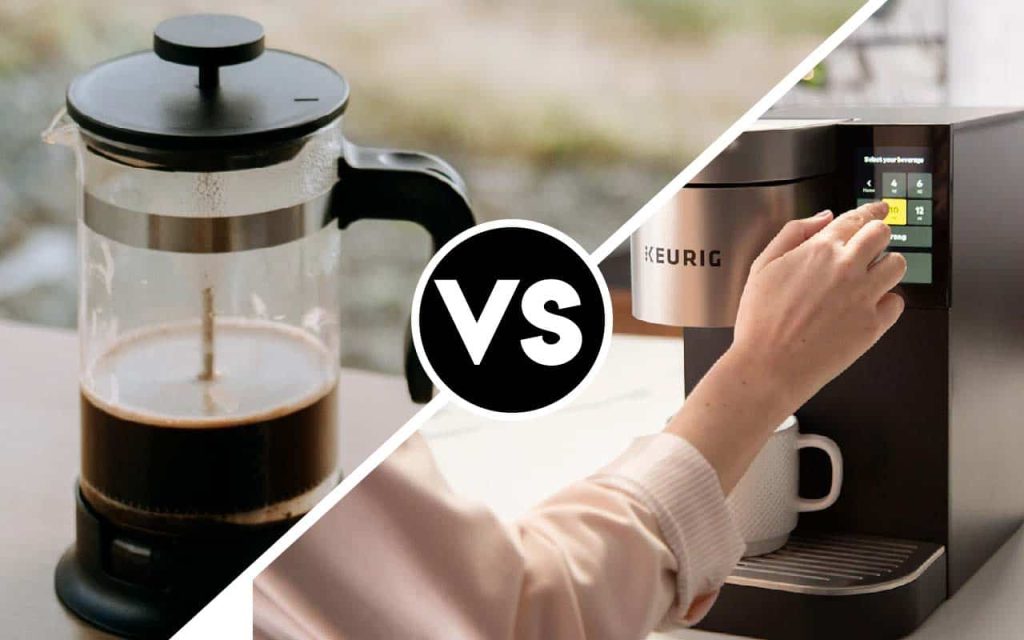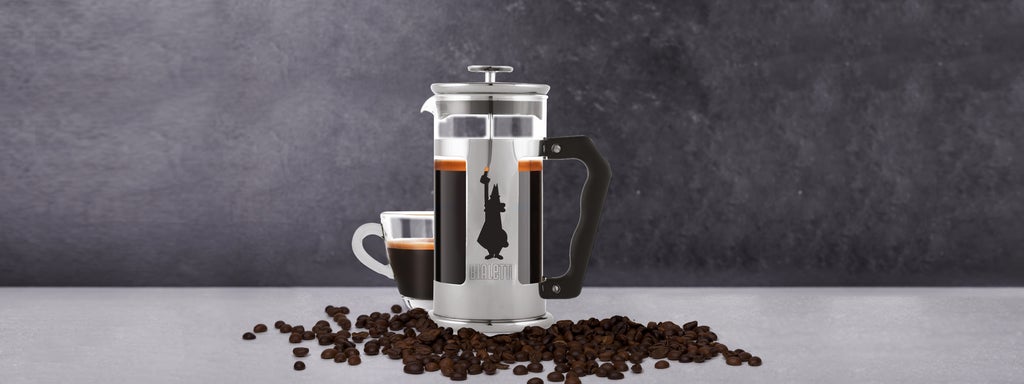Is It Worth Buying A French Press Coffee Maker?

Coffee is one of my favorite beverages and I’ve had a variety of coffee makers. But I remember thinking when I first started becoming severe about coffee if a French press was worth it.
Here are some of the things I’ve learned over the years. French press coffee makers are well worth the minor expenditure because they brew exceptionally clean coffee quickly and easily with no environmental waste from filters or pods. This is especially true considering how inexpensive they are in comparison to other coffee makers. However, there is much more to learn about French press coffee makers.
So we won’t just talk about price and durability, and we’ll also see how they stack up against other sorts of coffee makers. You’ll be able to make the best decision for you and your home this way.
Let’s get started!
I only choose goods that I own, have tried, or thoroughly studied to ensure excellence. I also include both high-end and low-cost options, so my recommendations are suitable for any budget.
A French Press coffee maker is a type of coffee maker that uses a press to produce coffee.
It’s easy to use a French press coffee machine. Fill it with coffee grounds and boiling water. Then cover with the lid, which has a strainer built-in, and steep for 5-7 minutes. Then, on the strainer, press the plunger down. This keeps the coffee grounds out of your cup and allows you to pour coffee without them.
There are no paper filters to muddy the flavor. Like other coffee makers, it doesn’t sit on the counter, with a water reservoir that could attract bugs or mildew. The carafe section is typically composed of glass with a metal and plastic top, plunger, and filter screen, and the entire item is usually dishwasher safe. Despite its name, the French press is of Italian origin, having been invented in 1929 by Paolini Ugo. However, the term “French press” is primarily used in the United States and Canada. It’s known as caffettiera, a standoff in its homeland of Italy. But for the time being, I’ll probably stick with the French press.
The advantages of a French press include
- Coffee that is 100% pure.
- It’s simple to change the strength of the coffee by changing the grounds and the amount of time it steeps.
- Inexpensive
- It’s also suitable for making cold brew coffee (use cold water and let it sit for 24 hours)
The disadvantages of using a French press
Because of the glass walls, the coffee cools rapidly. If you’re not careful, the glass can easily break.
Due to the lack of a paper filter, it is unable to filter out the chemical cafestol, which has been linked to an increase in LDL cholesterol (bad cholesterol)
What are the prices of French Press Coffee Makers?
The best-selling French press coffee machines are priced between $10 and $65, on average. However, a French press coffee machine costs between $25 and $40.
What causes such a wide range of prices?
It’s mainly about the size and the material it’s constructed of. The cheapest ones are approximately 12 ounces, which is probably only enough coffee for one person without having to prepare more. The most prominent French press coffee makers hold roughly 34-50 oz of coffee, which is enough for 2-4 (or more) persons. Keep in mind that some manufacturers label theirs as “8 cups.” It’s coffee cups, not measurement cups, that they’re referring to. It’s because they consider 1 “cup” to be roughly 4 oz rather than 8 oz, these are still around 34 oz.
I don’t know about you, but I’m going to a new coffee shop if someone hands me a 4 oz. cup of coffee! Glass, metal, and plastic are all used in several French presses. Others feature elaborate wooden handles and lids. I’d rather not have wood and throw it in the dishwasher, but it does look beautiful. Others are touted as shatterproof, which means that they are made of plastic rather than glass. Although they usually state that they are BPA-free, I believe that the glass ones taste better than the plastic ones.
Is there a difference between a French press and a drip coffee maker?

Yes, a French press is preferable to a drip coffee maker since it creates the purest form of coffee without using a paper filter, which can affect the flavor. For a more robust cup of coffee, soak it for longer. There are no concerns about plastic or BPA because most of the items are constructed of stainless steel and glass.
In my opinion, the drip coffee maker is the least desirable type of coffee maker. I adore our Keurig for its sheer convenience. I can prepare a cup of coffee in under a minute or two, and that’s with refillable K-cups and freshly ground coffee. It’s much faster if you use pre-packaged K-cups.
The French press, on the other hand, is best for pure coffee flavor.
Drip coffee makers have always been a source of frustration for me. To begin with, they are frequently more complicated than they need to be, with alarms, timers, and clocks, among other features. But I wouldn’t say I like the way coffee tastes when it’s sitting in a carafe on a heating pad; it effectively cooks it. It’s okay for a few minutes, but if I go to someone’s place and the coffee was made many hours ago and is still sitting on the warmer, you can guarantee I’ll pass.
Another major issue with drip coffee makers (as well as Keurigs) is that leaving water in the reservoir and lines can attract bugs and mildew. This is not only disgusting, but it also produces a bad-tasting cup of coffee. If you have a coffee maker, make sure to clean it on a regular basis.
Is a French press better than a Keurig for coffee?

A French press makes better coffee than a Keurig machine. The main advantage of a Keurig is its convenience, and there’s no need to wait, no steeping, and cleanup is simple. A French press, on the other hand, allows you to control the number of coffee grounds you use as well as the length of time you steep them, resulting in a superior cup of coffee.
However, I believe this is questionable. Both make very fresh and hot coffee with minimal processing between the grinds and the cup; water in, coffee out.
Pre-made K-cups, in my opinion, are Keurig’s worst enemy.
Why? Because the coffee is most likely ground months ahead of time, it has a higher chance of growing stale. Then it’s packaged in a plastic cup and placed inside a box in a warehouse or on a grocery store shelf, where it will remain for weeks or months.
By purchasing refillable K-cups (click to see my favorite ones on Amazon), you can make a far better cup of coffee in your Keurig. It’s also much healthier for the environment. For best freshness, I grind my coffee to order. The Keurig also triumphs because it continuously produces hot water for your coffee.
Coffee tastes best when it’s brewed between 197.6° and 204.8° Fahrenheit. Most Keurigs are closer to 192°, but even so, that’s still quite hot.
On the other hand, Starbucks brews its coffee at 190° and serves it at 165°. So you’re in excellent company with a Keurig’s temps.
However, unless you have a high-temp thermometer, it’s difficult to judge if the water is hot enough for a French press if you’re just heating it on the stovetop, as most of us do. We frequently go too high (raising it to a boil) or too low.
Is it better to use a percolator or a French press for coffee?
A percolator will not brew a cup of coffee as good as a French press. The reason for this is that a percolator relies on boiling water to blend with ground coffee. In contrast, a French press allows the coffee to be steep in hot, but not boiling, water. This produces a cup of coffee that is smoother and less bitter. A percolator is a vintage gadget that your great-grandmother most likely had. It is, nevertheless, not different from a French press. However, the primary distinction is that it effectively cooks the coffee since the grounds are kept dry in a top chamber above the water. As the water heats up, it begins to mix with the coffee grounds in the compartment.
That’s good in and of itself, but most people leave it alone for too long, resulting in the coffee effectively boiling and producing a bitter cup of coffee. Despite the availability of more sophisticated percolators, I would still choose a French press over a percolator.
I just believe they both need the same amount of time and work, but the French press produces a more consistent, less bitter cup of coffee.
How long should coffee be left in a French press?

Allow 4-7 minutes for coffee to steep in a French press, depending on how strong you want it. Because the walls of a French press usually are glass and not insulated, leaving it longer can result in a lukewarm cup of coffee.
When I use my French press now, I usually set the timer for 7 minutes. Then I press down on the plunger and pour. Experts, on the other hand, estimate that it takes about 4 minutes. While there are a plethora of coffee blogs on the internet and hence a plethora of purported experts, I sought assistance from my favorite coffee brand, Peet’s.
If you’re unfamiliar with Peet’s, its founder Alfred Peet is the man who taught Jerry Baldwin, Zev Siegl, and Gordon Bowker how to roast coffee beans. Starbucks even acquired their beans from Peet for the first year they were open.
But, somewhat of expanding to hundreds of stores across the country, Alfred Peet chose to focus his efforts mainly in California, where he was born.
Here’s how Peet’s recommends brewing the perfect cup of French press coffee,
On the burner, bring water to a boil.
- After turning off the burner, let it sit for 30 seconds on the stovetop.
- To preheat the French press, pour some of the water into it.
- In a coffee grinder, put 11 teaspoons of coffee beans.
- Grind the coffee to a coarse powder, similar to coarse sea salt.
- Drain the water from your French press.
- Fill the French press halfway with ground coffee.
- Adding just enough water to cover the coffee is all that is required.
- Allow 30 seconds after giving the coffee and water a quick spin.
- Continue to pour hot water until the rim is about 1 inch below it.
- In general, a 1-16 ratio of coffee to water ratio is ideal. So, if you have a 34 oz French press that’s almost full, you’ll need around a 1/4 cup (measuring cup) of ground coffee.
- Place the lid on the French press halfway down, then draw it back up.
- It’s ready to serve after another 4 minutes of waiting and pressing it all the way down.
That was a significant number of steps.
I’ve done it previously where I just eyeballed the coffee ratio and didn’t bother to wait for it to bloom before adding the rest of the water. As I previously stated, I also preferred to let it stay a bit longer, and I always received an excellent cup of coffee.
But if you want the best coffee, I recommend Peet’s!
In a French press, how much ground coffee do you use?
One part coffee to 16 parts water is the optimal ratio for a French press. For a 34 oz. French press, use 1/4 cup ground coffee and then fill the French press halfway with boiling water. Of course, if you wanted a weaker cup of coffee, you could steep for less time and use less coffee.
Can ordinary ground coffee be used in a French press?
Yes. In a French press coffee maker, you can use any ground coffee. However, using freshly ground coffee that is made entirely of Arabica would be better. The coffee beans will yield the most significant results. But, in the end, it depends on your definition of “regular.“A coarse grind of the coffee is preferable for French press coffee makers, and it should have a texture similar to quick rolled oats but not as refined as sand.
A suitable analogy is coarse sea salt.
While some people prefer the convenience of an electric coffee grinder, nothing beats a manual burr grinder for a finer grind. They’re simple to adjust to your desired coarseness or fineness, and they grind at considerably lower rates, resulting in less friction and more taste and aroma from your beans.
What’s the best way to keep my French press coffee hot?
Make 1 cup on demand, or move the brewed coffee to an insulated container to keep your French press coffee hot. Due to the French press’s non-insulated glass or plastic walls, French press coffee that rests in it after steeping will quickly lose heat. Since most are composed of thin-walled glass or plastic. This is a great question. As a result, they cool off quickly.
Which French Press coffee machine is the best?
The Bodum Chambord 12 oz. French press is the best French press coffee maker for one person. The Secura 50-Ounce stainless steel French press, on the other hand, is the perfect option for families or large groups of people.
Everyone is undoubtedly familiar with the name Bodum. However, just because a company has a larger marketing budget does not guarantee its best product. A quick look at their Amazon listings reveals various things with two-star reviews.
While there are exceptions, I will never recommend anything less than four stars unless it’s something I own and know is fantastic despite the reviews (though I will still tell you what those reviews say).
They do have several 4-star products, but we’re going to dive a little further to locate the best of the best, which may or may not be Bodum.
So I started by looking at all of Amazon’s best-selling French press coffee machines.
Then I ruled out anything with a rating of fewer than four stars. Then I compared it to the one I had. It can’t be a 10oz that only provides 1 1/2 cup. If you live alone, the Bodum Chambord 12 oz. is an excellent deal. It has over 4,000 reviews, and five-star ratings and is an Amazon’s Choice product for under $25.
But for me, the Secura 50-Ounce stainless steel French press is the way to go.
Out of almost 1,000 reviews, it has the most significant star rating of any coffee maker I’ve seen. It’s also an Amazon’s Choice item with free Prime shipping and a current price of under $40.
There’s no need to be concerned about glass breaking because everything is made of stainless steel. And with 50 ounces of coffee, you can serve even the most under-caffeinated of friends and family.
And yes, the entire thing can be washed in the dishwasher!
The cool-touch handle and knob complete the list of features that distinguish this as the Best French Press Coffee Maker!
Did I answer all of your questions about whether or not French Press coffee machines were worthwhile?
We took a quick peek at the world of French press coffee makers in this article post. We also looked at their history (hint: despite their name, they are Italian) and price. We looked at what makes some of them cost ten dollars and others sixty. Then we compared them to drip coffee makers and Keurigs to see how they performed. But, in the end, we said yes to the issue of whether a French press is worth it for most people.











